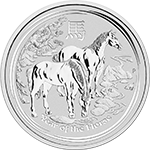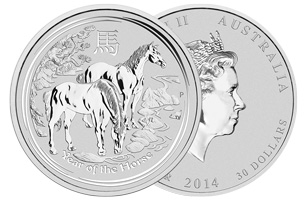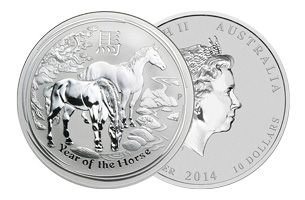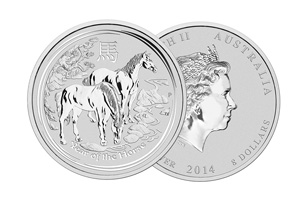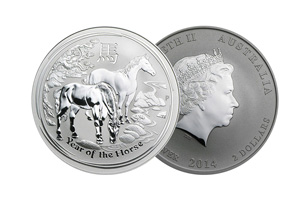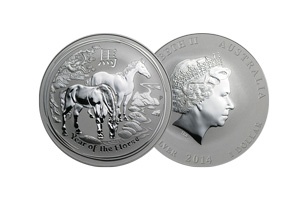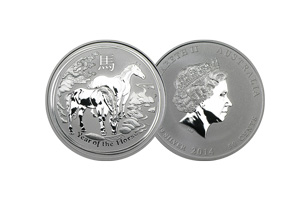Australian Lunar Silver, like the Perth Mint’s similar Australian Lunar Gold Series, celebrates the symbolism of the Chinese lunar calendar. According to Lunar Collector Coins, a site run by the Perth Mint, introduced the Gold Lunar coins first as a series to run from 1996 to 2007, commemorating each year of the calendar’s 12-year cycle. In 1999, demand for the gold coins encouraged the Perth Mint to introduce a series in silver and extend the entire series beyond 2007.
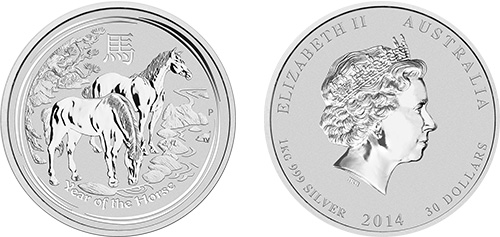
Each coin in the series features a different animal from the 12-year calendar on the reverse. That is why these coins are also referred to as Chinese Zodiac or Chinese Astrology coins, though those are not official names. For example, 2014 celebrated the Year of the Horse and 2013 celebrated the Year of the Snake. The obverse side of each silver coin features the “mature” profile of Queen Elizabeth II. Buckingham Palace released this updated profile in 1999, the year the Lunar Silver Series was introduced, so the silver coins all bear the mature profile while earlier gold Lunar coins carry a younger one.
The Perth Mint that produces Australian Lunar Silver operates as an official body of the Government of Western Australia, but it is distinct from the Royal Australian Mint. Perth focuses on producing investor and collectable coins and not coins meant for circulation. However, bullion coins from the Perth Mint are still recognized as legal tender according to their face value. In contrast, in the United States, the U.S. Mint produces coins for both circulation and collection. The Lunar coins epitomize a tradition of using Chinese themes for their presses, also seen in the Chinese Mythological Series, for example.
Australian Lunar Silver coins are struck from .999 fine silver.
According to the Perth Mint’s “2014 Silver Bullion Coins” guide, there are no mintage limits for 1 kg, 10 oz, 5 oz, 2 oz, or 1/2 oz coins. However, the Mint does limit production of 10-kilograms coins to 200 each year, which are in fact only made to order. For all of these coins, production ceases at the end of the year. The Mint does limit production of 1-ounce silver coins to a maximum of 300,000 each year. Whichever happens first, production stops either when all 1-ounce silver coins have been sold out or when the year ends. This control over production may help make these coins relatively scarce, which in turn may help drive the market for them as collectibles in the future.
Because the Perth Mint limits production of coins in this series, they may present a good opportunity for both bullion and collectable investors. The Lunar Series contains 99.9 percent silver, so they offer bullion investors a good opportunity to purchase high-quality bullion coins (note that face value may not reflect the bullion value of a Lunar Silver coin). Still, collectors who enjoy the excitement of gathering beautiful, limited, and legal-tender coins should consider Australian Lunar Silver coins as well. However, these coins are not eligible for a Silver IRA.

